Culture

Anyone who lives in Dhaka can tell you how hectic it is. How the restless energy of spirited people living in close proximity threatens to overwhelm all sense of structure. And how success is a matter of grooving to the city's rhythm while also knowing when to march to your own beat. So it's perhaps no surprise that Dhaka has developed a small but exciting jazz scene.
After all, New Orleans, the birthplace of jazz, was another restive collage of peoples, traditions and influences. This is reflected in the genre's extensive borrowing from blues and ragtime, which in turn drew from church spirituals and West African musical traditions. As it developed over the past century, jazz also appropriated and incorporated newer genres, including funk and rock.
I personally turned to jazz in my early twenties while feeling disconnected from more popular genres of music. As a musician I only dabbled at playing standards, songs that are widely known and performed by jazz musicians, but slowly developed an ear that appreciated the aesthetics of the form. From witnessing live acts I learned that the same standards could be played by the same musicians hundreds of times, but sound different on each occasion.
I came across Dhaka's own strain of jazz when I attended a performance by the Imran Ahmed Trio at a café in Gulshan. An air of enthusiasm and curiosity pervaded the audience and was met with a cheerfully exalted performance by the band. Their sound was an interesting concoction, producing the laidback atmosphere of modern ambient jazz, but cut through with the clean and faintly overdriven tone of Imran's guitar. The trio calls their music 'Jazz Fusion from Bangladesh' and they've been able to take this developing style to gigs abroad in Malaysia, Germany and Poland.
Many local musicians in Dhaka play heavy metal, which has a large following among young people and those who grew up in the late '80s and '90s. Though metal is challenging on a technical level, those who pursue jazz are looking for something a bit different.
"If anything, I would say it's the curiosity regarding our instruments and the determination to improve and grow as musicians that led us to jazz," says Mohaimin Karim, bass player of the Imran Ahmed Trio. "It's our research and curiosity...we would hear music educators preach the importance of getting into jazz on the internet... we were all just deeply interested in the genre around the same time, so that brought us together."
The bringing together of different instruments and the interactions between them is one of the defining features of jazz. Through improvisation and ingenuity, musicians breathe new life to old standards each night. Robert Russell, who leads his own jazz trio, compares his band's performances to a chat.
"Jazz was something I heard and came to love because of its interplay and freedom and the way it seems like a conversation between people," he says.
This improvisation is key to jazz and separates the genre from most other forms of western music. It is the result of a combination of fleeting artistry and technical mastery, and leads to a back and forth, give and take dynamic between band members sharing the stage and telling their own stories through their music.
Listening to the Robert Russell Trio perform left me entranced. I became engrossed by Robert's virtuosity on the piano and the steady determination of the rhythm section. The drums and bass provide the forward momentum while the piano flies around it, dipping down and then soaring up exuberantly. The trio refer to their particular style as 'World Jazz Fusion' and have expressed interest in touring.
Another important aspect of jazz is hybridization, which has been central to its evolution over time. Pioneers of the genre showed remarkable skill in fusing opposing ideas and achieving balance and coordination, thereby allowing the genre to grow.
"Our approach to playing our instruments is more jazz than the music we play." says Raihan Majumdar, the drummer of Lettuce Experiment. "We just play the music and if it's good to the ear, good to the soul, we play it and jam. We improvise a lot of music, and as we improvise we explore various genres naturally, following wherever the groove leads us."
Lettuce Experiment maintain a jam band ethos. A group of dedicated musicians with an experimental mindset, they improvise extensively and boast a wide range of influences, from hip hop to electronica. Raihan listed artists as varied as Fela Kuti and Cream among 20 that he considers important to developing their style.
"We play a lot of funk and blues, sometimes mixed with rock and then play that in a jazzy manner. Regardless, we do dwell in a lot of music that is inspired by jazz. Most importantly we think that there is a lot of freedom in exploring our instruments through jazz," Raihan says.
This freedom makes jazz an expansive art form that can accommodate a variety of styles and ideas. Jazz from a hundred years ago is vastly different from that which is popular now. It has altered and transformed, branching out into many different sub genres and changing with the times. It is now wide enough to incorporate the dynamism of Big Band, the impressionism of Cool Jazz and the futurism of Acid Jazz.
"We think of jazz more like an approach than a genre. It's too broad a term and the sound of 'jazz' changes each decade. It's not about aiming for a specific sonic texture, but our approach might eventually lead to one," says Rahin Haider, saxophonist of The Seesaw Quartet.
The Seesaw Quartet's music has a playful vitality. Their songs are carefully structured, with a riff introduced by one instrument eventually taken up and expanded by another in turn. It has the easy familiarity and teasing spirit of the banter among a group of longtime friends.
Though each band has a unique sound, all of them share a passion for musicianship. This, along with commonalities in taste, ambition and talent bring them together. And it is this comradery that has materialized into Dhaka's small jazz scene. Each musician, with the help of the other members of their ensemble, as well as the other members of the scene, are growing and expanding their repertoire.
"Dhaka's jazz scene is still in its infancy. But we have a feeling that there is a growing interest among both the listeners and the musicians towards this kind of music," says Rahin.
I have not heard Lettuce Experiment or The Seesaw Quartet perform live, but I have familiarized myself with their music and I know that they will not disappoint. Though the current audience for these bands is small, it has great room to grow. These bands release their music online and on social media. Any reader interested can find and explore the scene, as I did.
Living in a vibrant metropolis like Dhaka gives people the chance to see small peculiarities like this scene flower and come into their own. The melting pot of the city is much like the alchemy of jazz, which mixes tradition and originality, and sees different musicians and instruments coming together. I am excited to see these bands release more of their intriguing music, and to hear other takes on this up-and-coming variety of jazz.
The writer is an aspiring music critic and a jazz aficionado.



















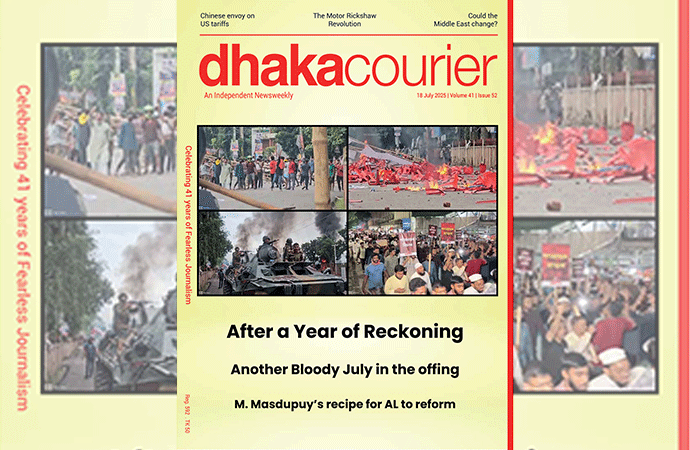
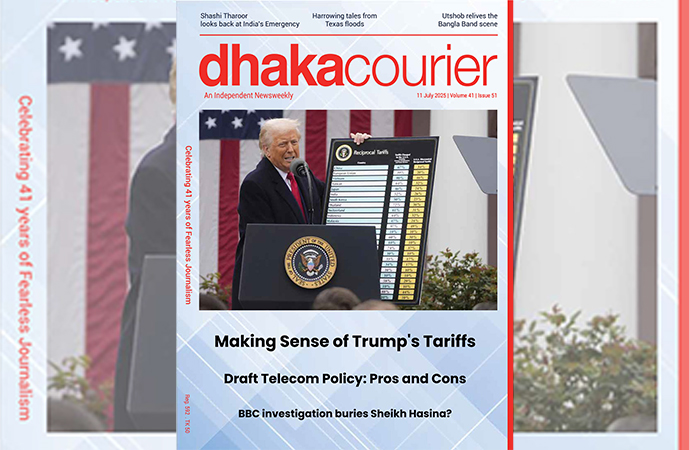
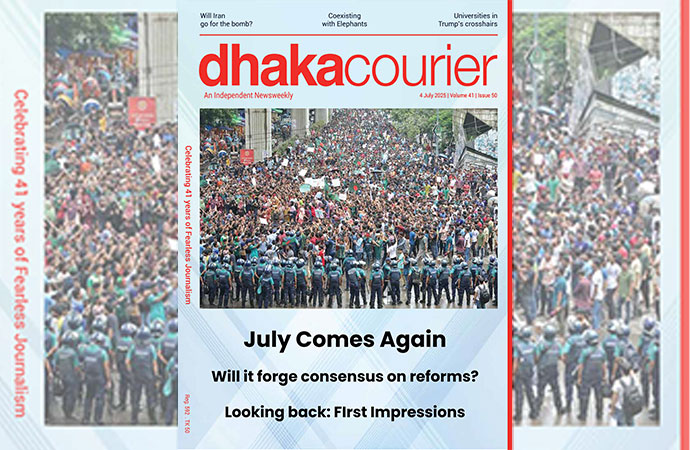
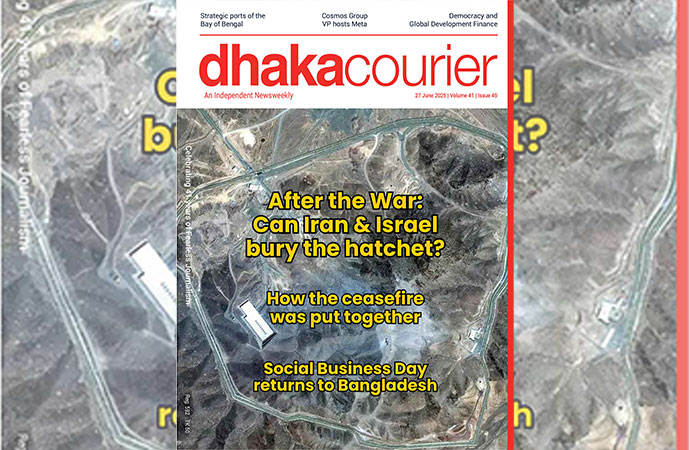
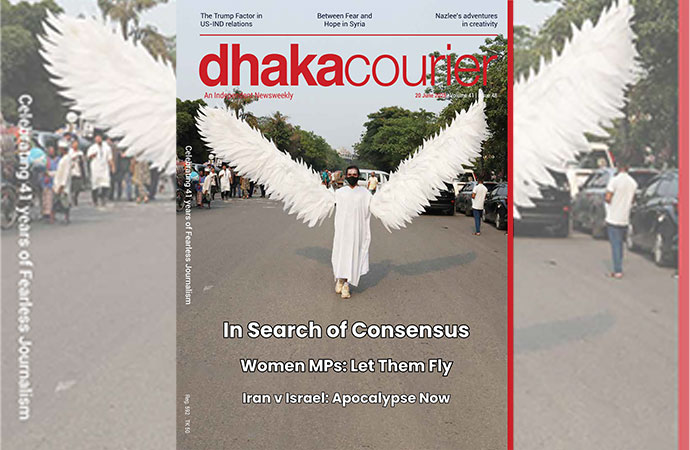

Leave a Comment
Recent Posts
The Northeastern Question
When secessionist movements sprang up across the Eastern European part ...
Trump’s Tariff: How far should ...
Will Bangladesh manage to get a last minute reprieve on its 'Trump tar ...
Rivers, Peaks, and Expressions – My Experience at th ..
What lies behind the alarming spike in violence agai ..
A Himalayan choice
Twenty Palestinians were killed at a food distributi ..